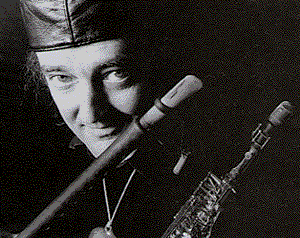Pot Head Pixies Over Yerevan
Tired of the Diasporan fixation with Nune Yesayan, especially when the phenomenon was created outside of Armenia, when I started to look into the development of a contemporary and diverse musical scene in 1999, there was some potential. Unfortunately, however, that potential soon got hijacked by businesses close to the government. It's hardly surprising, therefore, that most of the music created in Armenia today serves patriotic purposes only or at the very least, promotes apathy among youth in the country.
 | ... |
Of course, the precedent for successful Armenian rock has been set by the US band of Armenian descent, System of a Down. However, while the band visit Armenia they have yet to play here.
But, starved of a diverse and quality contemporary music scene, and probably as I get older and reminisce about the past, I've been looking back to listen to the bands I did in my late teens and early twenties. It was that which took me out to CD shop after CD shop recently to look for some of the lesser known bands I liked in the West -- bands such as Hawkwind, for example. And surprisingly, I found CDs by them although it has to be said, it was unfortunate that the MP3 CD of Hawkwind albums didn't include Bob Calvert/Hawkind albums such as PXR5 or Astounding Sounds and Amazing Music. What surprised me even more, however, was to find albums by bands like Gong available in Armenia.
Gong was formed by an Australian, Daevid Allen, who had materialized in Paris in 1960. After meeting and working with William S. Burroughs, Allen started to experiment with free form jazz and eventually ended up in England where he formed the band, Soft Machine, with Kevin Ayers in 1966. After overstaying his visa in the UK, Allen ended up in the middle of the 1968 student protests in Paris before forming Gong not long after. Apparently based on hallucinations experienced during an acid trip, Allen invented a world of Pot Head Pixies and Flying Teapots on the imaginary planet, Gong.
 | ... |
In fact, Malherbe was involved in the first ever International Duduk Festival staged in Yerevan in 2001 to celebrate the 1700th Anniversary of Christianity in the republic where he performed with Gasparian. He also has a band, Hadouk, a French jazz trio that fuses the three string African bass, the Hajouj, with the Armenian Doudouk. Now, if only they had Green, an album by Gong's guitarist and "progressive house" pioneer, Steve Hillage (and produced by Pink Floyd's Nick Mason), available in Yerevan. On the subject of Armenian rock, however, there are interviews with Sard, Hovhannes Kourghinyan and MDP on my web site.
Tag: armenia | music

<< Home